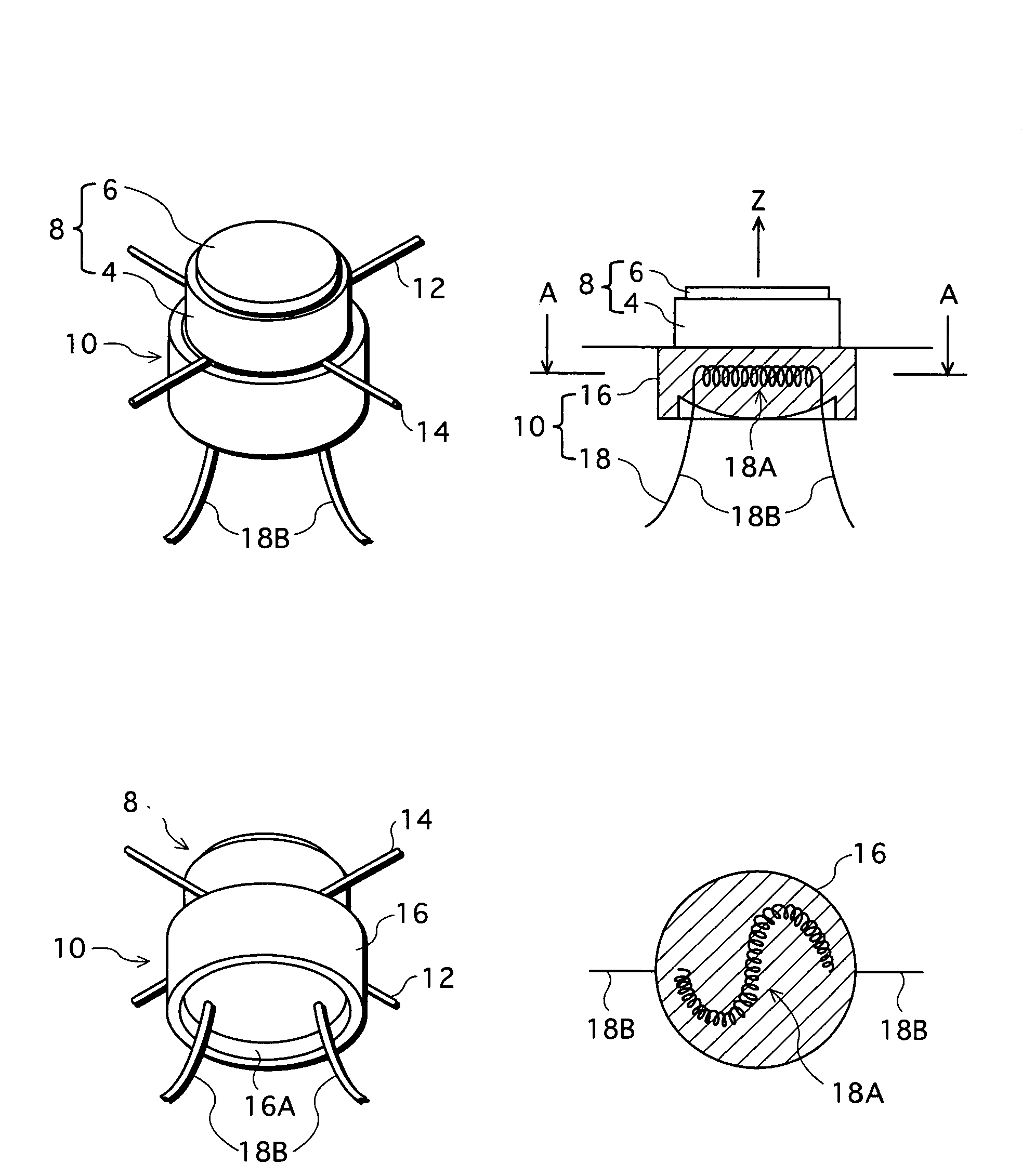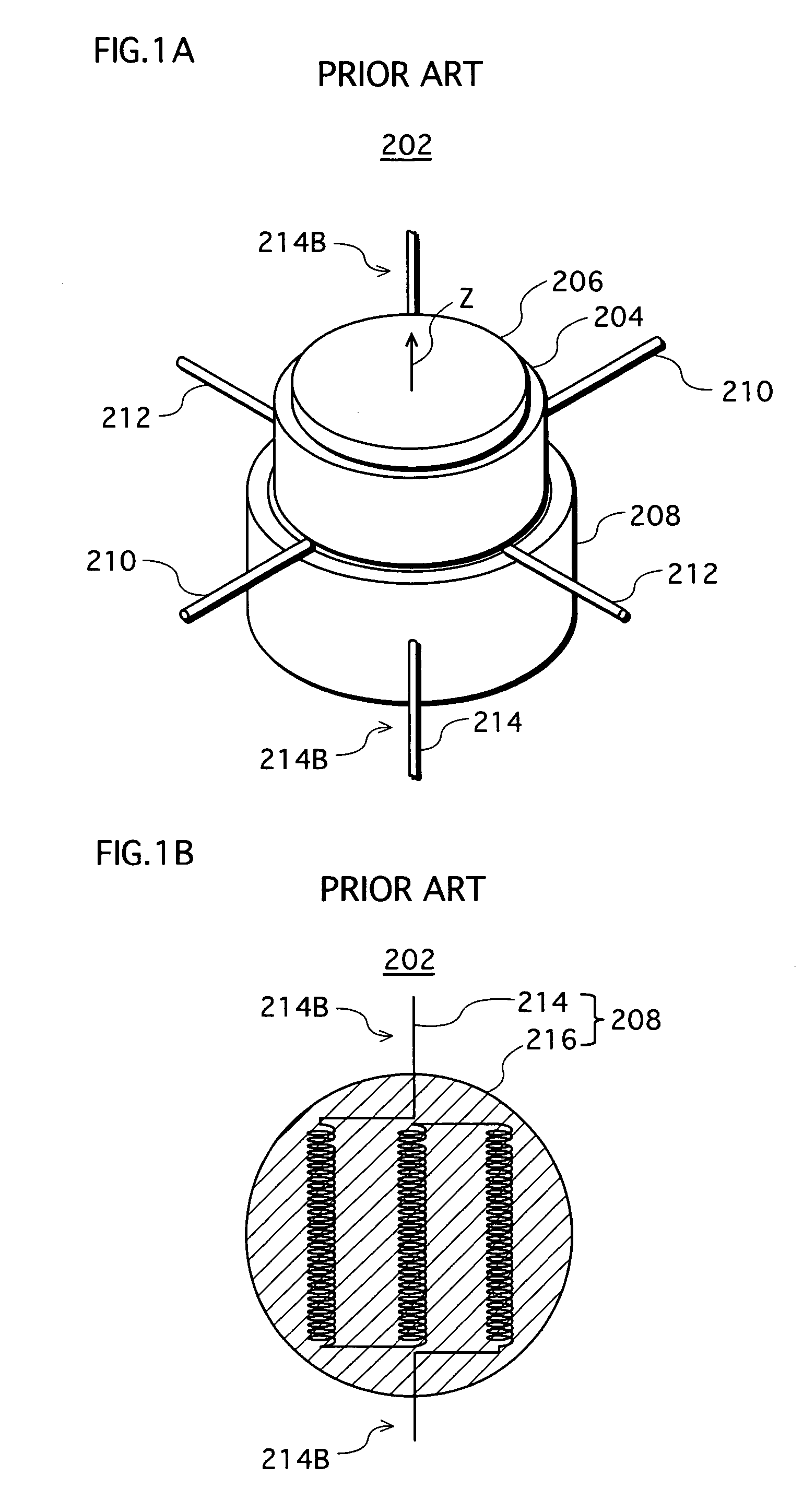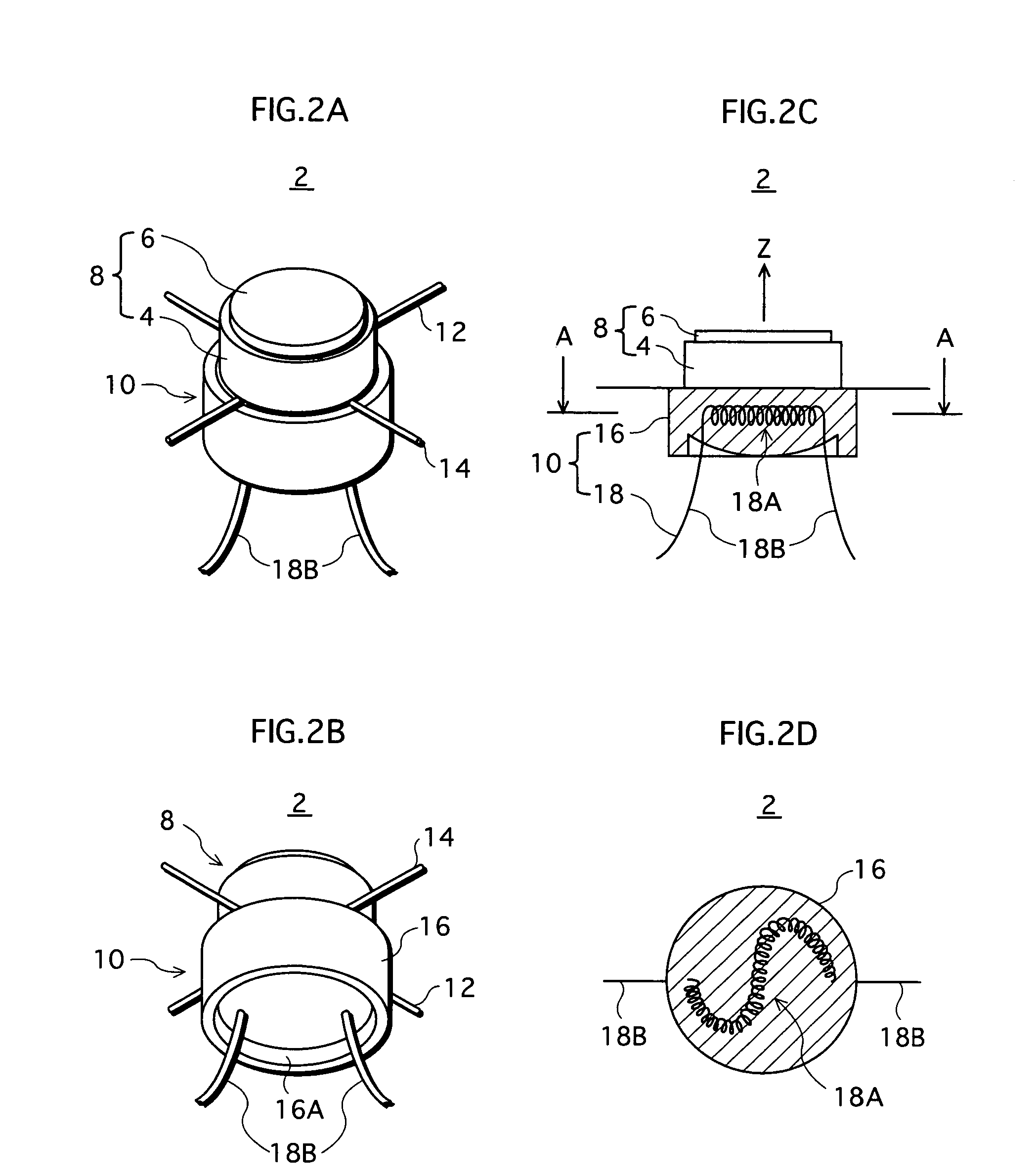Cathode structure including barrier for preventing metal bridging from heater to emitter
a cathode structure and barrier technology, applied in the direction of discharge tube/lamp details, discharge tube main electrodes, incadescent cooling arrangements, etc., can solve the problems of inability to control the amount of electron beams, and the inability to obtain electron beams, etc., to achieve the effect of suppressing short-circuits and emitted unnecessary thermal electrons
- Summary
- Abstract
- Description
- Claims
- Application Information
AI Technical Summary
Benefits of technology
Problems solved by technology
Method used
Image
Examples
first embodiment
[0061]FIGS. 2A, 2B, 2C, and 2D illustrate a cathode structure 2 according to a first embodiment. FIG. 2A is a perspective view of the cathode structure 2 viewing from an angle from the top, and FIG. 2B is a perspective view of the same from an angle from the bottom. FIG. 2C is a partial cross-sectional view of a heater 10 which is to be described later, and FIG. 2D is a cross-sectional view taken at line A-A in FIG. 2C. For convenience, the cross-sectional views in FIGS. 2C and 2D only show cross-sections of a ceramic (electric insulating material) body 16 and not for a coiled part 18A.
[0062]The cathode structure 2 includes a cathode unit 8 having a cylindrical metal cup 4 and a circular columnar pellet 6 that is set in the metal cup 4, and a heater 10 that is almost circular columnar. The cathode structure 2 is structured in such a manner that the metal cup 4 and the heater 10 are connected each other, with supporting metal wires 12 and 14 crossing each other interposed between the...
second embodiment
[0124]A second embodiment is different from the first embodiment in a structure of the heater of the cathode structure. Other components, such as the electron gun, are the same as the first embodiment. Therefore, explanation is given mainly to a different part from the first embodiment.
[0125]FIGS. 13A and 13B illustrate a cathode structure 52 of the second embodiment. FIG. 13A is a side view of the cathode structure 52, and FIG. 13B is a perspective view of the cathode structure 52, viewing from an angle from the bottom.
[0126]In the cathode structure 52 according to the second embodiment, the heating wire 18 leads out from a side surface of a circular columnar ceramic body 54. The cathode structure 52 includes a large diameter part 54B between the exposed surface of the pellet 6 (electron emitting surface) and a part from which the heating wire 18 leads out of the side surface. A diameter of the ceramic body at the large diameter part 54B is larger than that at the part from which t...
PUM
| Property | Measurement | Unit |
|---|---|---|
| diameter | aaaaa | aaaaa |
| diameter | aaaaa | aaaaa |
| height | aaaaa | aaaaa |
Abstract
Description
Claims
Application Information
 Login to View More
Login to View More - R&D
- Intellectual Property
- Life Sciences
- Materials
- Tech Scout
- Unparalleled Data Quality
- Higher Quality Content
- 60% Fewer Hallucinations
Browse by: Latest US Patents, China's latest patents, Technical Efficacy Thesaurus, Application Domain, Technology Topic, Popular Technical Reports.
© 2025 PatSnap. All rights reserved.Legal|Privacy policy|Modern Slavery Act Transparency Statement|Sitemap|About US| Contact US: help@patsnap.com



